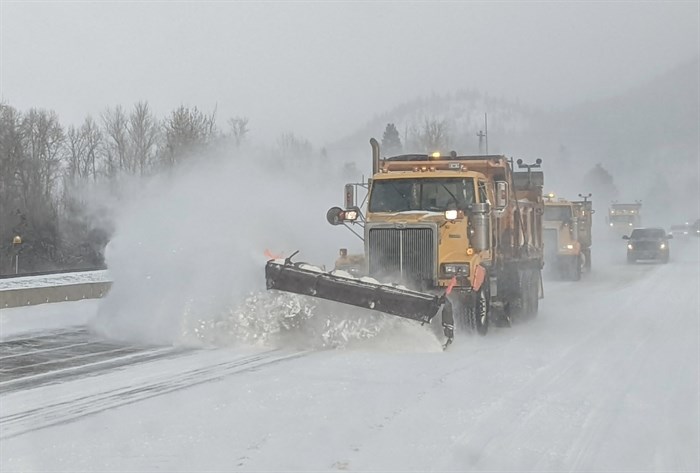Overwhelming majority of drivers in Southern Interior use winter tires: survey
Most drivers in Southern Interior use winter tires, according to an ICBC survey.
The poll conducted by the provincial Crown corporation in October 2023 found 93 per cent of drivers in Thompson-Okanagan and Kootenay regions have winter tires on their vehicles.
Thirty-eight per cent of those surveyed said they witnessed a crash last winter and 21 per cent had a near miss or close call on the roads.
ICBC also asked drivers what their top concerns were when it comes to winter driving.
Survey respondents said their main concerns with winter driving were icy roads (78 per cent), freezing rain (58 per cent) and poor visibility (35 per cent).
Drivers are also concerned about the human factor on BC roads.
Seventy-three per cent said other drivers don't slow down in icy conditions, 71 per cent felt others down't know how to drive in the winter, while 46 per cent said other drivers are aggressive or inconsiderate.
Crashes due to drivers going too fast for the conditions increase by 145% in January in the Southern Interior compared to October, according to BC police data based on a five-year annual average from 2018 to 2022.
The ICBC survey was conducted with the ICBC insight panel and 1,445 people responded.
The insurance corporation shared some winter driving tips:
1. Make sure your vehicle is prepared for winter including winter tires for driving in snow and ice. Ensure your headlights and taillights are in good working order and use them whenever visibility is reduced. Pack an emergency kit in case you get stuck or stranded. Clear off any snow that's built up on your vehicle before driving including headlights, wheel wells and external sensors if you have a collision warning system. Visit Shift into Winter for more tips.
2. The key to driving in snowy and icy conditions is to drive slow and steady, avoiding any unexpected sudden movements that could cause you to skid or lose control. If you have to drive, accelerate gently, steer and turn slowly and gradually, braking slowly and early. Increase your following distance while travelling behind vehicles and focus on your surroundings so you can be prepared for the unexpected. Anticipate turns, stops and lane changes well in advance. Don't use cruise control on slippery roads.
3. Be patient and allow extra travel time to get to your destination. Plan your route ahead of time and visit drivebc.ca to check for current road conditions and possible road closures. Don't pass snow plows on the road. These vehicles may be equipped with a wing blade on either of its sides which may not be visible due to the snow it sprays.
4. Beware of black ice when temperatures near freezing. If you notice ice build-up on your windshield, there's likely black ice on the road. Black ice is commonly found in shaded areas, bridges, overpasses and intersections. Slow down and increase your following distance in these slippery areas. Focus your full attention on the road and use extra caution when approaching intersections. It can be difficult to see pedestrians and other road users when visibility is reduced.
5. When heavy winter conditions hit, consider alternatives to driving if possible: take public transit, arrange a taxi or ride-hailing service if you’re not comfortable driving, work from home if you're able to or wait until the road crews have cleared the major roads.
Check road conditions on DriveBC here.
Find an emergency kit packing list here.
To contact a reporter for this story, email Jesse Tomas or call 250-488-3065 or email the editor. You can also submit photos, videos or news tips to the newsroom and be entered to win a monthly prize draw.
We welcome your comments and opinions on our stories but play nice. We won't censor or delete comments unless they contain off-topic statements or links, unnecessary vulgarity, false facts, spam or obviously fake profiles. If you have any concerns about what you see in comments, email the editor in the link above. SUBSCRIBE to our awesome newsletter here.




